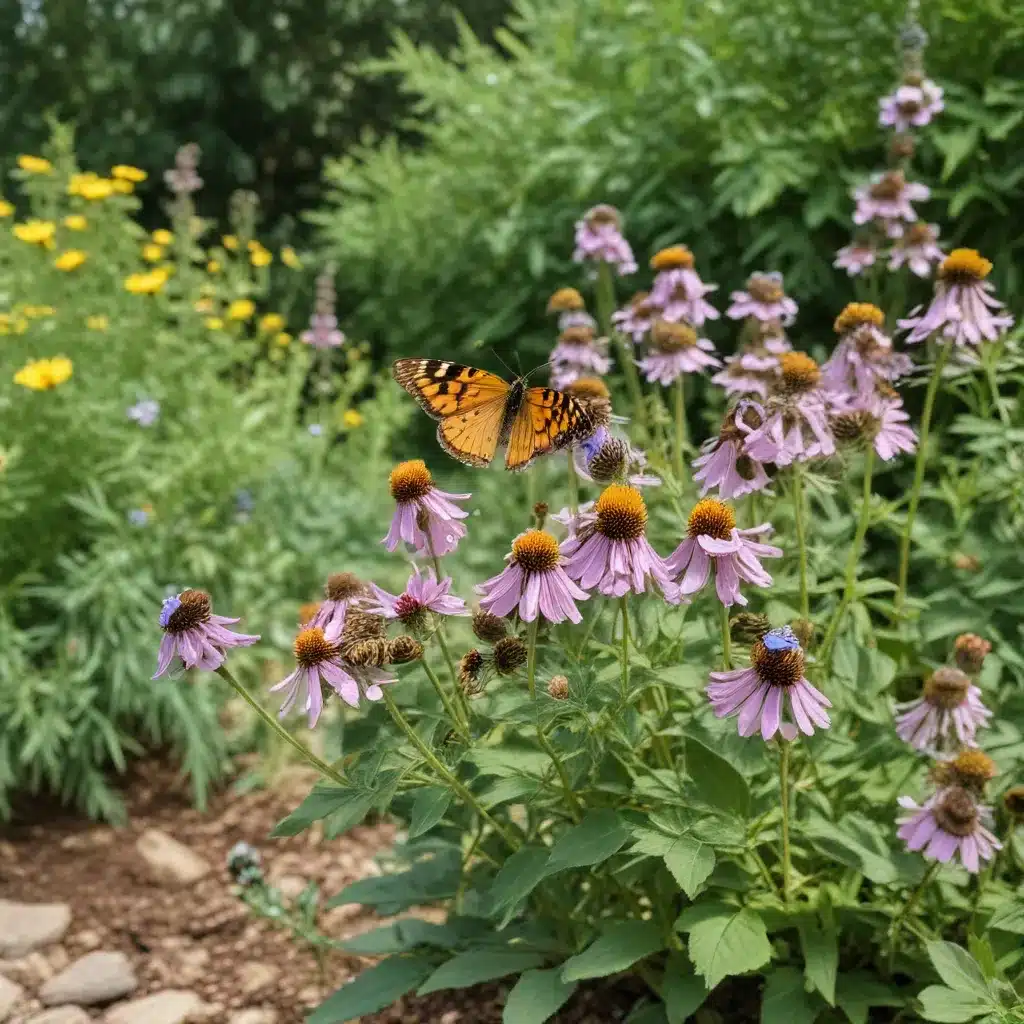
Pollinators are the unsung heroes of our natural world, carrying out the vital task of transferring pollen between plants to enable the production of fruits and seeds. From buzzing bees to fluttering butterflies, these creatures play a crucial role in sustaining the delicate balance of our ecosystems. As gardeners and nature enthusiasts, we have a unique opportunity to support these essential pollinators by cultivating pollinator-friendly landscapes that cater to their diverse needs.
The Importance of Pollinators
The Role of Pollinators in Ecosystems
Pollinators are the backbone of thriving ecosystems, facilitating the reproduction of a vast array of plant species. Bees, butterflies, moths, hummingbirds, and even some small mammals contribute to this intricate web of life, ensuring the continued growth and diversity of our natural landscapes. Without their tireless efforts, many of the fruits, vegetables, and flowers we enjoy would cease to exist.
The Benefits of Pollinator-Friendly Gardening
By creating pollinator-friendly gardens, we not only support these vital creatures but also reap a bounty of personal rewards. Attracting a diverse array of pollinators can enhance the beauty and productivity of our gardens, as these industrious visitors pollinate our vegetable crops and ornamental plants. Additionally, a thriving pollinator population can help maintain the overall health of our local ecosystems, contributing to the resilience of the natural world around us.
Threats to Pollinator Populations
Unfortunately, pollinator populations are facing numerous threats, including habitat loss, pesticide use, climate change, and the spread of invasive species. As gardeners, we have the power to mitigate these challenges by providing safe havens for pollinators in our own backyards. By adopting sustainable gardening practices and incorporating native plants, we can create oases of biodiversity that support pollinators and the broader web of life.
Planning a Pollinator-Friendly Garden
Assessing Site Conditions
The first step in creating a pollinator-friendly garden is to assess the unique characteristics of your site. Consider factors such as sunlight exposure, soil type, and existing vegetation. This information will guide your plant selection and help ensure the long-term success of your pollinator-friendly landscape.
Selecting Pollinator-Friendly Plants
When choosing plants for your garden, focus on native species that are well-adapted to your local climate and soil conditions. Native plants not only provide essential food and shelter for pollinators but also require fewer inputs, such as water and fertilizers, to thrive. Research the specific plants that attract the pollinators you wish to support, and strive to create a diverse tapestry of blooming plants that offer a continuous food source throughout the growing season.
Designing Garden Layout
Strategically arranging your pollinator-friendly plants can further enhance their benefits. Group plants of the same species together to create eye-catching displays that draw in pollinators. Additionally, consider incorporating layered plantings, with taller species in the background and smaller, ground-covering plants in the foreground, to create a visually appealing and structurally diverse habitat.
Cultivating a Diverse Plant Community
Native Plant Selection
When selecting native plants for your pollinator-friendly garden, prioritize species that are known to support the specific pollinators in your area. Research local plant nurseries or conservation organizations to identify the best native options for your region. By focusing on native plants, you’ll not only attract a wide variety of pollinators but also contribute to the preservation of local ecosystems.
Seasonal Blooming Sequence
Ensure that your garden provides a constant source of nectar and pollen by choosing a diverse array of blooming plants with varying flowering times. This “bloom sequence” will ensure that your pollinator visitors have a reliable food source throughout the growing season, from the first spring blossoms to the last autumn flowers.
Providing Shelter and Nesting Sites
In addition to a bountiful food supply, pollinators also require safe havens for shelter and nesting. Incorporate features like native bunch grasses, hollow stems, and dead wood to create multifunctional habitats that cater to the diverse needs of your pollinator guests.
Sustainable Gardening Practices
Organic Pest Management
Avoid the use of synthetic pesticides and opt for organic pest management strategies that protect pollinators while maintaining the health of your garden. Encourage the presence of beneficial insects, such as ladybugs and lacewings, that prey on common garden pests. Additionally, consider incorporating companion planting techniques to naturally deter unwanted visitors.
Water Conservation Techniques
Pollinators require a reliable source of water, but it’s important to do so in a sustainable manner. Implement water-saving strategies, such as mulching around plants, collecting rainwater, and selecting drought-tolerant native species, to ensure your garden thrives while minimizing water consumption.
Reducing Chemical Inputs
In addition to pesticides, be mindful of other chemical inputs, such as synthetic fertilizers, that can harm pollinators and disrupt the delicate balance of your garden ecosystem. Instead, focus on building healthy, nutrient-rich soil through the use of compost, vermicompost, and other organic soil amendments.
Conclusion
By creating pollinator-friendly garden oases, we can play a vital role in supporting the health and well-being of our local ecosystems. Through the thoughtful selection of native plants, the implementation of sustainable gardening practices, and the provision of essential shelter and nesting sites, we can cultivate thriving landscapes that serve as safe havens for pollinators and the myriad of other creatures that call our gardens home. Join us in this journey of nurturing nature and watch as your garden blossoms into a vibrant, diverse, and resilient oasis.


